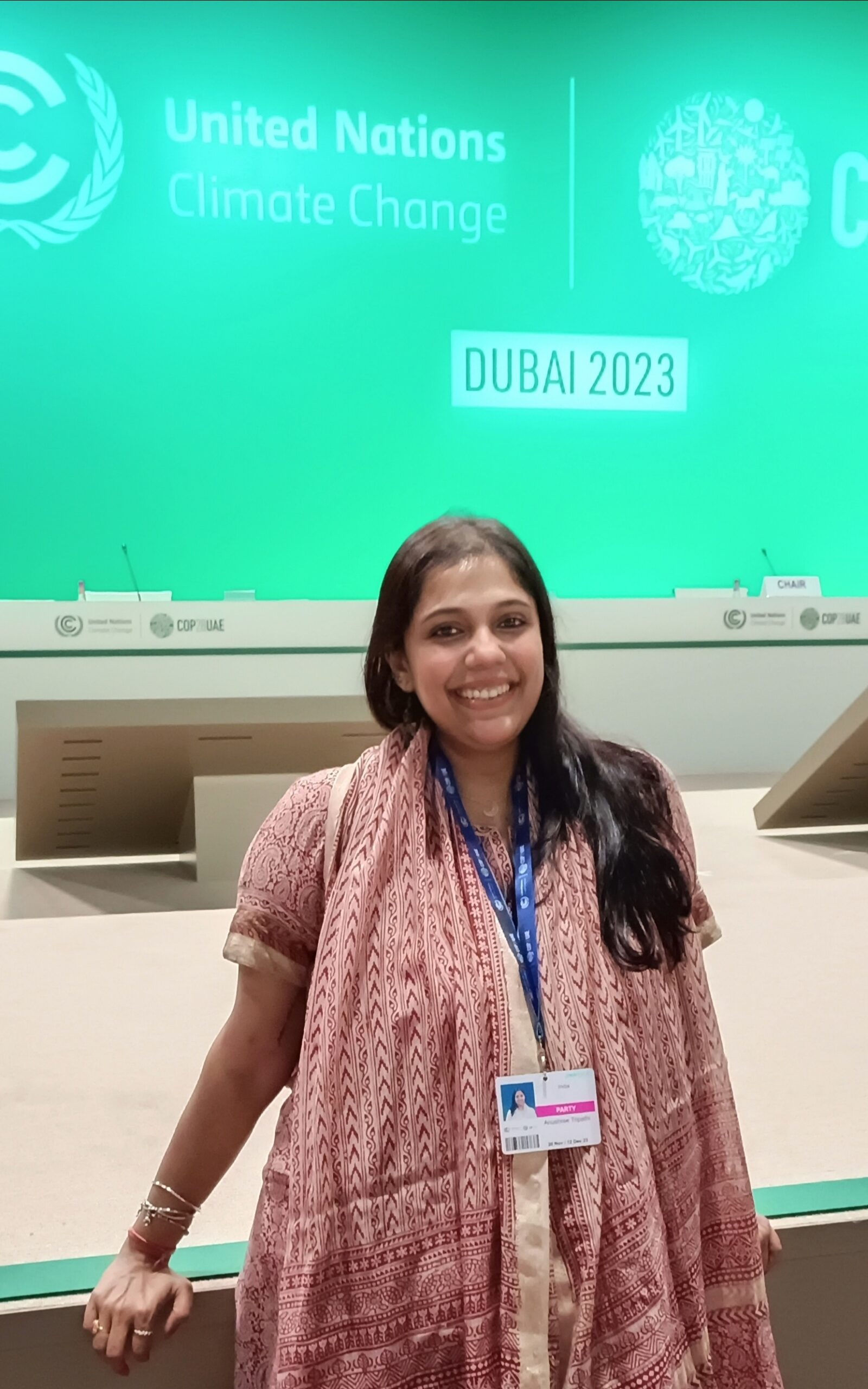Climate-specific legislation is becoming a necessity for all economies, regardless of their development pathways. Even with the gaps highlighted, it must inspire replication.
Framed through the lens of a petrostate, structurally committed to transitioning, the United Arab Emirates’ (UAE) first standalone climate law, Federal Decree Law No. (11) of 2024, titled On the Reduction of the Effects of Climate Change (Decree), enshrines climate ambition and governance in national legislation.
Notably, the law was enacted just weeks after hosting UNFCCC COP28 (Dubai, 2023), and shortly after the launch of the UAE’s Third Nationally Determined Contribution (NDC), its most ambitious climate targets yet.
With the potential to shape regional climate ambition and inspire similar legal frameworks across the Global South, it signals a shift from strategy to statute in similarly situated nations.
I. Contextual Significance
The UAE一an OPEC member and a net hydrocarbon exporterencapsulated prior climate efforts in net-zero pledges and integrated climate policies.
Set to come into force on 30 May 2025, the law builds on existing sectoral strategies一such as the UAE Green Growth Strategy, the National Energy Strategy 2050, National Climate Change Plan. It has been designed in alignment with the UAE’s existing state capacity.
The law understands the strengths and constraints of the UAE’s governance model. It is performative, building on existing structures rather than introducing new ones. It uses pre-established institutions. It provides regulatory, institutional, and national security[1] architecture, cross-sectoral coherence, and places climate change at the heart of national planning.
II. Unique Features
1. A Climate Council with Executive Mandate:
The legislation establishes a layered architecture to climate governance by building incrementally on existing institutions while enhancing them. Article 5 designates the Ministry of Climate Change and Environment (MOCCAE) as the national authority, which determines annual targets for emission reduction for all sectors.
MOCCAE coordinates with local authorities within each Emirate to develop climate risk assessments and localised adaptation plans, in alignment with nationally determined pathways to achieve emissions reduction and climate neutrality. This decentralised-yet-coordinated structure addresses one of the most persistent problems in climate governance globally: fragmentation.
2. Mandatory mitigation and adaptation plans:
The established framework for coordinated climate action across federal and local authorities mandates the development of sector-specific and regional climate mitigation and adaptation plans. MOCCAE, in collaboration with local authorities, is tasked with developing these plans.
These plans apply to all emission sources. They aim to assess key climate-related risks in each sector, establish response measures and early warning systems, and ensure implementation of necessary adaptation actions (Article 7). This horizontal mainstreaming is key to ensuring that climate action is not siloed but embedded across sectors like energy, transport, water, etc.
3. Carbon Registry:
Article 6 establishes a national carbon credit registry. It is a foundational step toward enabling a domestic carbon market architecture in the UAE. This centralised platform will record issuance, transfer, and retirement of carbon credits, ensuring transparency.
The registry complements the UAE’s increasing role in voluntary carbon markets.
Moreover, the registry strengthens the UAE’s capacity to participate in Article 6 mechanisms of the Paris Agreement, particularly Article 6.2 (voluntary cooperative approaches) and Article 6.4 (global carbon market mechanism). This positions the UAE as a regional hub for carbon trading, in line with its Net Zero by 2050 Strategic Initiative.
4. Emissions Accounting and MRV Integration:
Creating a legal bridge between domestic data systems and the Paris Agreement’s Enhanced Transparency Framework (PA-ETF), Article 6 mandates the development of a comprehensive greenhouse gas (GHGs) emissions measurement system. This merits special mention because it integrates the national GHG inventory with sector-specific reporting obligations and the legally binding measurement, reporting, and verification (MRV) mechanism under PA-ETF.
5. Enforcement and Penalties:
Future ministerial regulations or guidelines will define sector-specific reporting obligations, compliance pathways, methodologies, formats, and timelines. Such regulations would operationalise the general provisions, while allowing flexibility, as global climate obligations evolve. This enforcement framework brings private and public actors under a unified accountability structure. Non-compliance is addressed through regulatory penalties (Article 15).
6. Private Sector Integration:
Acknowledging private enterprises’ role, particularly in emissions-intensive industries, Article 12 mandates industrial facilities to submit emissions data and mitigation plans. Making climate action no longer voluntary CSR but a regulatory compliance.
7. Cross-Cutting Human and Social Focus:
Social equity is embedded by recognising vulnerable groups, prioritising public health, and promoting environmental education.
III. Gaps and Limitations
1. Missing Elements on climate action
Marking an evolution from climate tucked within broader environmental concerns, the law is exclusively climate-focused. It addresses mitigation, adaptation, low-emissions development, and institutional coordination. However, it is notably silent on the just transition.
This is a glaring gap. Particularly, in light of the UAE’s role in shaping the outcome of the first Global Stocktake (GST) under the Paris Agreement at COP28. The GST outcome operationalised the transition away from fossil fuels, based on national circumstances.
2. Lack of Climate Justice Framework:
There is no recognition of intra- or intergenerational equity, rights of future generations, protection of the most vulnerable, and common but differentiated responsibilities and respective capabilities (CBDR-RC). CBDR-RC is the cornerstone of the UNFCCC climate framework, used to balance economic interests with ecological imperatives.
3. Limited Public Engagement Provisions:
Public participation is not embedded as a principle or process.
4. Implementation Risks:
Federal-Emirate alignment could prove complex in practice, especially if economic interests diverge. While enforcement is mandated, the extent of sanctions, penalties, and legal remedies for non-compliance is still somewhat vague. These grey areas will need refining through future regulations. The Decree’s true test will lie in how effectively it reshapes the UAE’s emissions trajectory and institutional reporting and oversight over the next decade.
IV. Potential for Success
The Decree does not merely restate net-zero ambitions. It creates binding obligations, translating political commitments into justiciable responsibilities, enhanced by the following enabling factors:
1. Climate Data Infrastructure:
MOCCAE, as the lead implementing agency, already has a climate data infrastructure in place. For instance, the UAE’s Third BUR (2022) showcased a transparent GHG inventory, outlined sector-specific mitigation efforts and data gaps. The law aligns itself with existing capacities in UAE institutions and leverages digital infrastructure.
2. Centralised Climate Governance:
A “whole-of-government” approach is reinforced by empowering MOCCAE to coordinate national climate policy across ministries, local governments, and key sectors. This top-down clarity will ensure consistency across the seven Emirates and harmonise efforts across line ministries such as energy, transport, industry, and agriculture.
3. Regional Leadership in Legal Integration of MRV:
The UAE positions itself as a regional leader by creating a legal chain of climate data, from source-level emissions tracking and national inventory to international reporting. This increases accuracy and ensures accountability. Few countries have embedded MRV systems into their legislation with such foresight and granularity. Such an explicit legal backbone for GHG data flows is still emerging in the MENA region.
4. Economic Diversification Strategy:
The UAE’s strategy of economic diversification, including heavy industry, transport, petrochemicals, tourism, information technology, telecommunications, renewable energy, aviation, aligns well with the Decree’s objectives. This synergy reduces the risk of resistance from entrenched hydrocarbon lobbies.
5. Private Sector Mobilisation:
The UAE has signalled strong support for carbon markets and voluntary climate action by domestic enterprises. MOCCAE’s 2023 initiative to develop a national framework for voluntary carbon markets complements the Decree’s provision on carbon credit registries. The Decree arrives when market actors are primed for regulatory clarity.
6. Global Investment Climate:
As capital increasingly flows to climate-aligned jurisdictions, the law strengthens the UAE’s position as a green finance destination. Sovereign wealth funds, ESG investors, and development banks are more likely to view the UAE as a partner of choice.
V. Model for the Global South and Beyond
The law signals that fossil-fuel dependence can coexist with climate ambition. The Decree could serve as a template for developing economies seeking to legally operationalise their climate commitments without undermining national priorities and sustainable development goals.
It enhances legal literacy by eschewing dense technical statutory language, it remains clear, accessible, and operational. The drafting reflects a deliberate choice to make climate law legible to government officials, lawyers, businesses, communities, and all relevant stakeholders. This offers a blueprint for integrated climate governance, especially in regions where the environmental rule of law remains nascent.
It demonstrates to resource-constrained nations that climate law need not be voluminous or verbose to be effective. Nor does it need to be maximalist by proliferating overly ambitious targets that remain unimplemented.
Climate-specific legislation is becoming a necessity for all economies, regardless of their development pathways. Even with the gaps highlighted, it must inspire replication. It lays the foundation for a new form of legal diplomacy─beyond declarations of ambition, to embedding it in legal architecture.
[1] National security here must not be understood in the traditional sense, rather, it should be recognized as a strategic shift. Climate Change is a risk multiplier affecting economic stability, food and water security, energy reliability, population health, and geopolitical positioning.
Anushree Tripathi, LL.M. (Cantab), is a Climate Change Lawyer based in Dubai, United Arab Emirates, and an Advocate of the Supreme Court of India.












